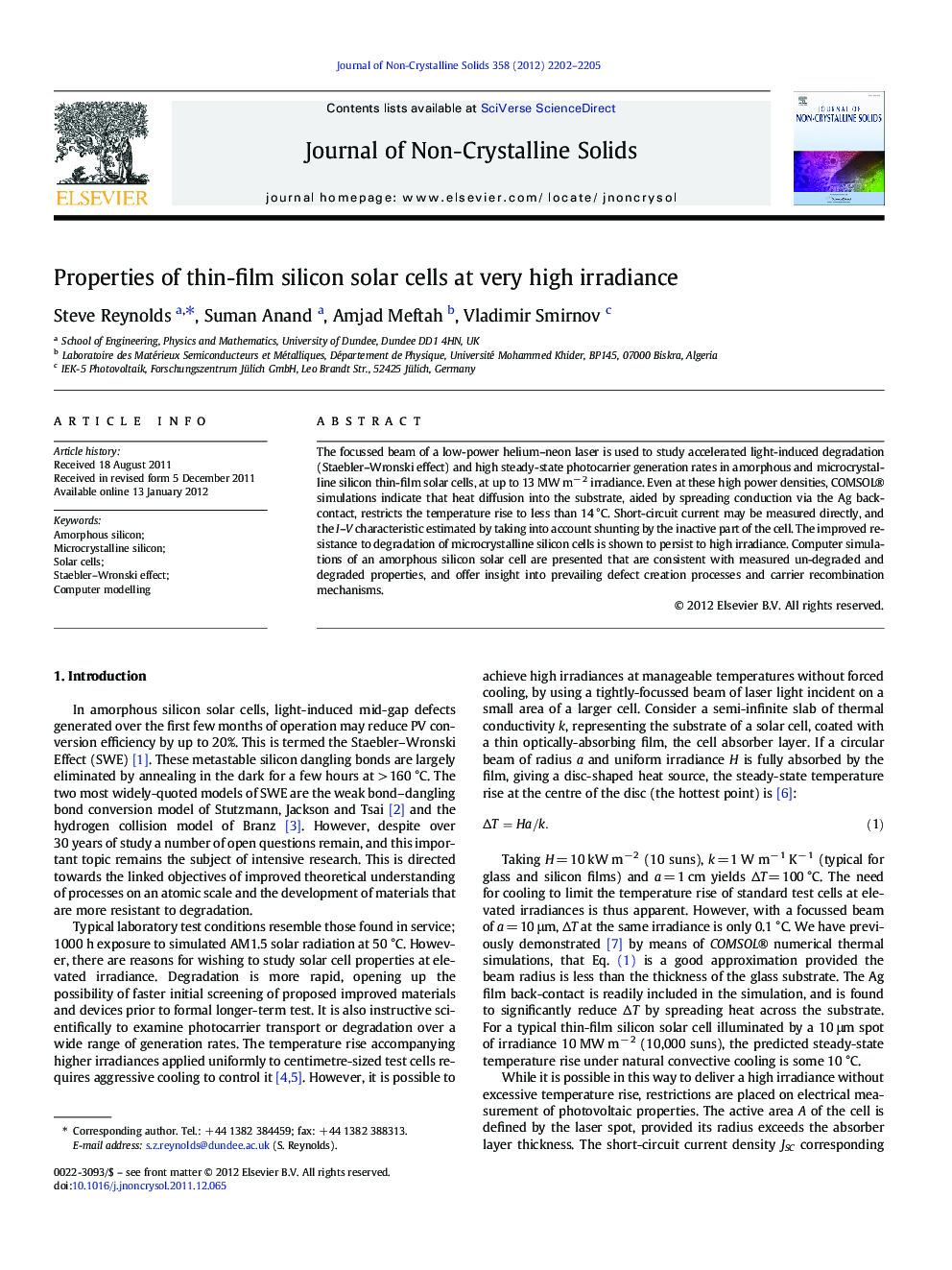| کد مقاله | کد نشریه | سال انتشار | مقاله انگلیسی | نسخه تمام متن |
|---|---|---|---|---|
| 1481702 | 991538 | 2012 | 4 صفحه PDF | دانلود رایگان |

The focussed beam of a low-power helium–neon laser is used to study accelerated light-induced degradation (Staebler–Wronski effect) and high steady-state photocarrier generation rates in amorphous and microcrystalline silicon thin-film solar cells, at up to 13 MW m− 2 irradiance. Even at these high power densities, COMSOL® simulations indicate that heat diffusion into the substrate, aided by spreading conduction via the Ag back-contact, restricts the temperature rise to less than 14 °C. Short-circuit current may be measured directly, and the I–V characteristic estimated by taking into account shunting by the inactive part of the cell. The improved resistance to degradation of microcrystalline silicon cells is shown to persist to high irradiance. Computer simulations of an amorphous silicon solar cell are presented that are consistent with measured un-degraded and degraded properties, and offer insight into prevailing defect creation processes and carrier recombination mechanisms.
► Transport and degradation in thin-film silicon solar cells studied by focussed laser.
► Steady-state temperature rise below 14 °C at flux of 4 × 1021 cm− 2 s− 1.
► 1018 cm− 3 light-induced defects in amorphous silicon after 1 day exposure.
► Microcrystalline silicon cells degrade little under high flux conditions.
► Computer simulations correctly predict main features of transport behaviour.
Journal: Journal of Non-Crystalline Solids - Volume 358, Issue 17, 1 September 2012, Pages 2202–2205